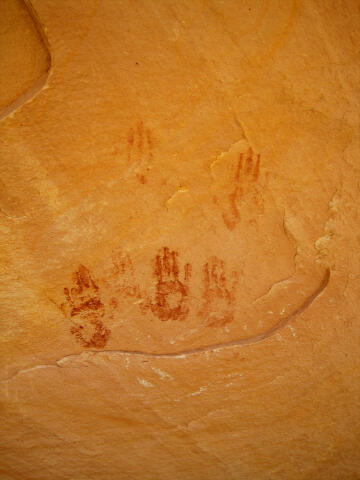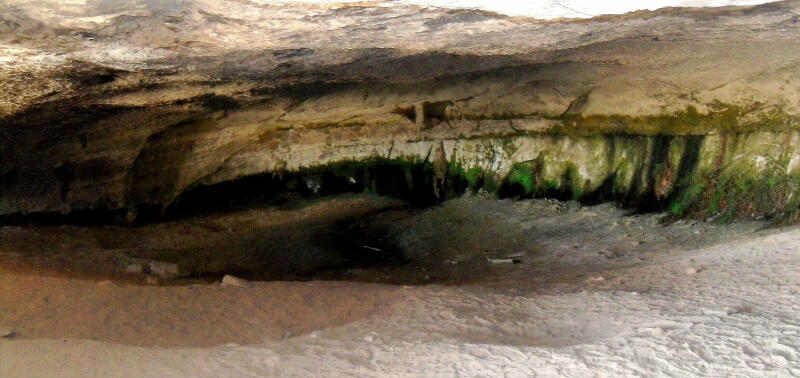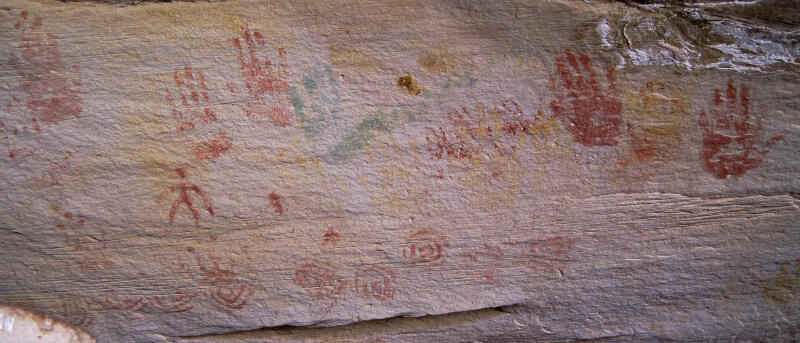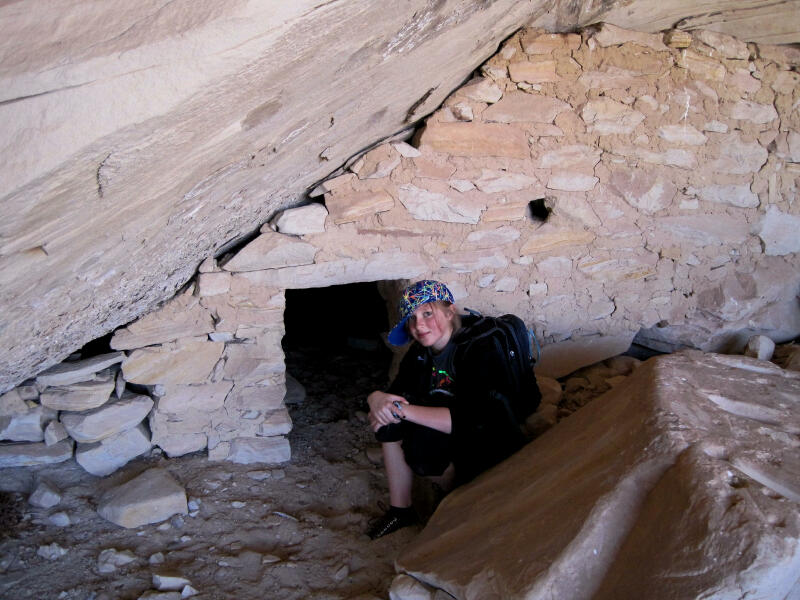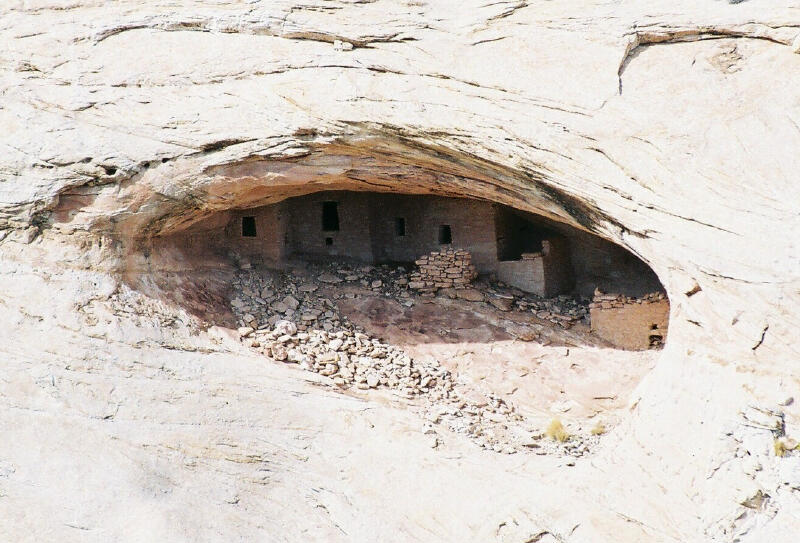[ Homepage ] [ Introduction ] [ Warning ] [ Ratings
] [ Ethics ] [ Feedback ] [ Updates
]
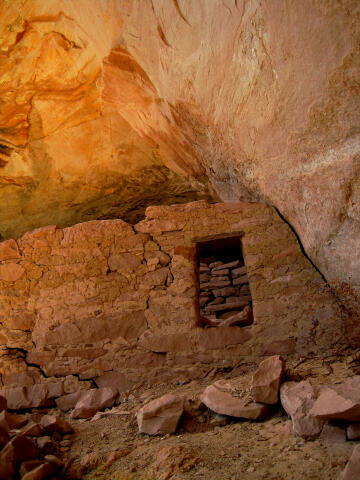 |
Cold
Spring Cave
and Eagle's Nest
Anasazi Ruins
Cedar Mesa
Hiking
Cold
Spring Cave is a fascinating Anasazi (sometimes called Ancient Pueblo or
Ancestral Pueblo) cliff dwelling tucked into Comb Ridge. The ruins
contain many interesting structures and varied pictographs and petroglyphs. The more
adventurous can scramble over to an outstanding viewpoint of Eagle's Nest, which are
amazing Anasazi ruins built high in the alcove of a massive sandstone cliff. |
Circle of Friends:
Cold
Spring Cave Ruins are part of the "Circle of Friends"
program. Members of the "Circle of Friends"
have access to more specific information, explicit route information, GPS waypoints,
trailhead location and detailed maps. If you
would like more information on joining the "Circle of Friends" visit the sign
up page.
"Circle of Friends"
General Information:
Cold Spring Cave Ruins require a
short hike. The route is rated 1A I using the Canyon Rating System. A good route
description and a GPS are extremely useful in locating ruins and verifying you are on the
correct course. Navigation for this route is moderate.
Trailhead Information:
The trailhead is usually accessible
to all vehicles in good weather.
History:
Cold Spring Cave and Eagle's Nest
were discovered by the 1892 Illustrated America Exploring Expedition. Warren K. Moorehead
was appointed as leader of the expedition to explore, survey, map, photograph, and secure
specimens in southeastern Utah. Although the Illustrated America Exploring Expedition
collection of artifacts was very small, Moorehead and members of his expedition wrote
enthusiastically and romantically about their adventures and discoveries in a series of
articles for American Illustrated Magazine. Their descriptions of alcoves and ruins in
Butler Wash are memorable.
Discovery of Cold
Spring Cave:
Here is what the 1892 Illustrated
America Exploring Expedition wrote about the discovery of Cold Spring Cave.
"In the immense sandstone
spur outcropping between Butler's Wash and Comb Wash, about ten miles north of the San
Juan River, we noticed a large cave in one of the deep canyons in the ledge, and,
examining it with our field glasses we thought we could distinguish ruins near the
opening. Four of us started to investigate and found it a cavern of great dimensions, with
the whole floor under the overhanging ledge studded with ruins. The canyon in which this
picturesque cave town is situated is wild and beautiful, shut in on all sides by high
sandstone cliffs, and having only one narrow entrance. The foliage is almost tropical in
its luxuriousness. We found cactus plants of gigantic size, and grass and flowering plants
over a foot in height, while the bare rocky ledges were studded with cedars, cottonwood
and pinions. This luxurious growth of cactus and of other plants which were stunted upon
mesas is probably caused by the heat being retained in the bare, rocky ledges, thus
producing the forcing effect of a green house. We have named the place Cold Spring Cave,
on account of the fine spring of cold, clear water away in the back interior of the cave.
it flows out from under the heavy sandstone ledge into a round, clear pool, and, after
passing through a short outlet, sinks into the ground and disappears, not half a dozen
feet from where it started."
Discovery of Eagle's
Nest:
Here is what the 1892 Illustrated
America Exploring Expedition wrote about the discovery of Eagle's Nest.
"While
examining the canyons near Cold Spring Cave, our attention was attracted to a cave-like
recess near the top of one of he high cliffs, about a mile to the northwest. We gave it
the fitting name of Eagle’s Nest. As it looked difficult of access, we took a long
stout rope and started up the cliff, intending, if possible, to obtain entrance to it by
means of the rope from the top of the cliff. Upon reaching the top, the cliff proved very
much higher than we had expected. Beneath us was full four hundred feet of sheer
precipice, the cave being situated about fifty feet from the top. We fastened our rope to
three sage-brushes, about fifty feet apart, and then, by clinging to the rope and swinging
from one foothold to another, we were able to reach the floor of the cave, although at
first it seemed a difficult feat to swing under the overhanging ledge into the cave."
"One can not see the
bottom of the cliff from the cave, yet if a rock is hurled over the side, it can be heard
crashing its way down the sides of the cliff to a surprisingly great depth."
[ Homepage
] [ Introduction ] [ Warning ] [ Ratings ] [ Ethics
] [ Feedback ] [ Updates ]
© Copyright
2000-, Climb-Utah.com |


